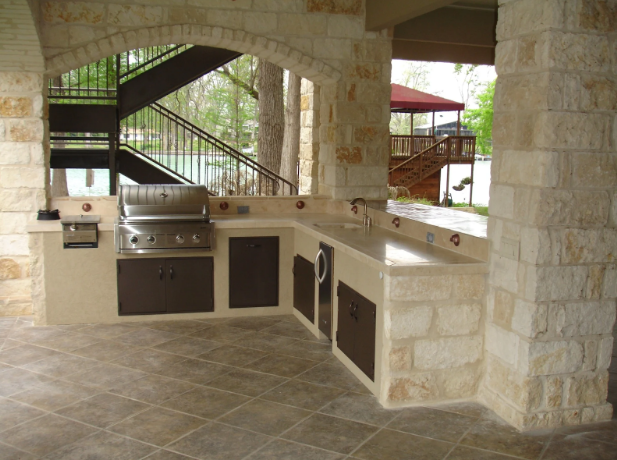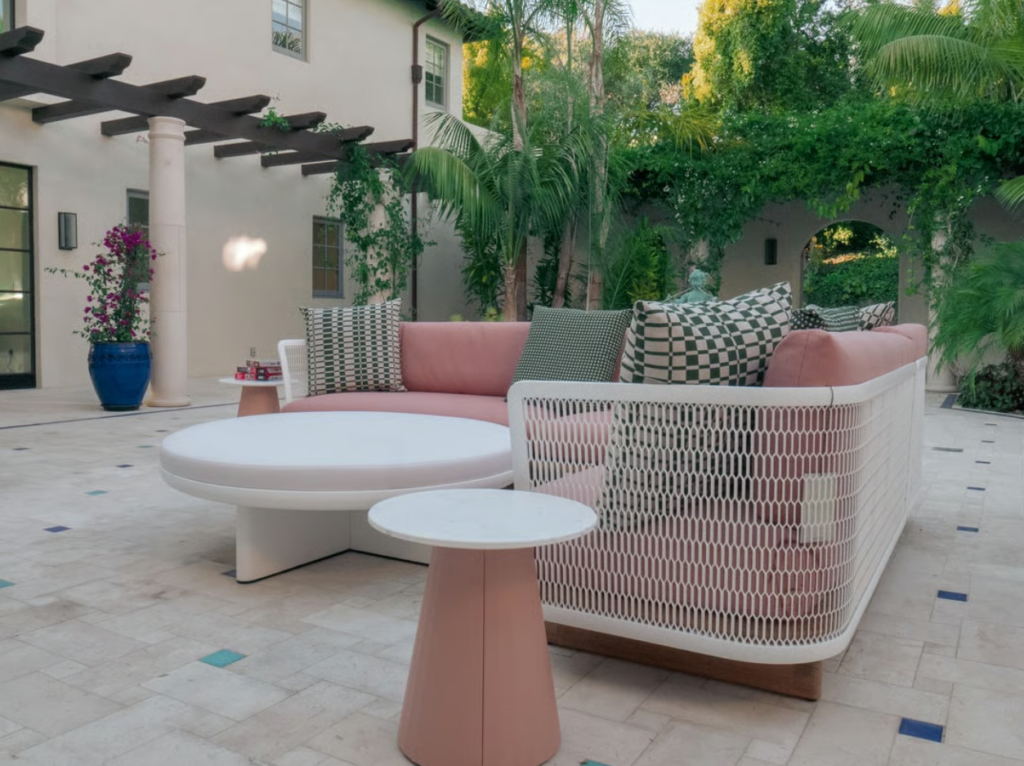
Designing an outdoor kitchen goes beyond setting up a grill and a table. For those who love to cook and entertain, a well-planned outdoor culinary space can transform the way meals are prepared and shared. Whether it’s Sunday brunch with family or late-night gatherings with friends, the right layout and features help extend the warmth and joy of cooking into the open air.
Outdoor kitchens provide more than convenience. They offer a seamless blend of function, comfort, and beauty. From proper storage and plumbing to thoughtful lighting and design flow, these kitchens require detailed planning. Every element must align with your lifestyle and cooking preferences to ensure that the space becomes an extension of your home.
Table of Contents
Start with Layout and Workflow
As with any indoor kitchen, the layout dictates functionality. Designing an outdoor cooking area means considering how food moves from prep to grill to plate. A logical flow reduces walking back and forth and minimizes clutter, especially during large gatherings.
Think about the classic kitchen work triangle: cooktop, sink, and refrigerator. In an outdoor setting, this triangle may become more of a work “zone,” where grilling, prepping, and washing areas are designated by space or islands. Plan for movement between these zones without bottlenecks, particularly if more than one person will be using the space.
Bar seating or a dining area nearby creates a natural gathering place and keeps guests engaged while giving the cook enough room to work.
Integrating with the Rest of the Yard
An outdoor kitchen should feel like a natural extension of your property, not an afterthought. Whether you’re working with a small patio or a sprawling backyard, the design should match the rest of the landscape in tone and function.
Choose materials that echo elements of your home’s exterior or garden features. Coordinate with existing stonework, colors, or decking. This cohesiveness enhances curb appeal and makes your kitchen feel like it belongs. You can also click here to explore real-world examples and additional features worth considering. Inspiration helps fuel creativity when mapping out the layout or finishing touches of your space. Adding a small herb garden nearby or built-in planters around the space offers visual beauty and fresh ingredients at your fingertips.
Prioritize Durability in Every Element
Outdoor kitchens face the elements, sun, wind, rain, and humidity, so every material choice matters. From countertops to cabinetry, each component must be built to withstand weather conditions while maintaining visual appeal.
Stainless steel appliances are ideal for their longevity and resistance to rust. For cabinets, consider marine-grade polymer or teak, which offer both durability and style. Avoid untreated wood or porous stone that can absorb moisture or crack with temperature changes.
Surfaces should be easy to clean and resistant to grease, grime, and spills. Choose countertop materials like granite or concrete, which are low-maintenance and look elegant in outdoor settings.
Cooking Equipment: Quality Over Quantity
It’s tempting to load an outdoor kitchen with every gadget and appliance imaginable, but quality should always outweigh quantity. A high-performance grill should be your first investment. Whether it’s gas, charcoal, or a hybrid, make sure it suits your cooking style and offers space for multitasking.
A side burner is great for sauces or sautéing, and a pizza oven can elevate any dinner party. That said, too many add-ons can clutter the space and limit functionality. Choose items you’ll use frequently, and place them where they’ll serve you best.
Ventilation is often overlooked. Even in open-air kitchens, a vent hood can prevent smoke buildup in covered patios or partially enclosed structures.
Storage and Utility Access
A well-stocked outdoor kitchen isn’t complete without sufficient storage. You’ll need dry space for tools, spices, dishes, and grilling accessories. Enclosed cabinets with sealed doors protect items from insects, dust, and rain.
Plan for a sink with proper drainage to rinse produce or wash hands. If possible, extend plumbing and gas lines to avoid portable tanks and makeshift water setups. This adds convenience and cuts down on long-term maintenance.
Think ahead about electricity. Outlets for blenders, fridges, or lighting should be safely installed and covered. These little upgrades create a more functional cooking environment and reduce the need to run inside for supplies.

At its best, an outdoor kitchen reflects the lifestyle of its owner. It’s more than a place to cook. It’s a space to gather, connect, and celebrate the joy of food in fresh air. Whether you’re grilling steak on a summer evening or baking pizza for friends on a chilly afternoon, the right design helps every moment feel relaxed and intentional.
By focusing on flow, durability, and personalized features, you create a culinary hub that meets your needs while adding value to your home. With thoughtful planning, your outdoor kitchen can become the centerpiece of your backyard, where meals are shared, stories are told, and memories are made one bite at a time.